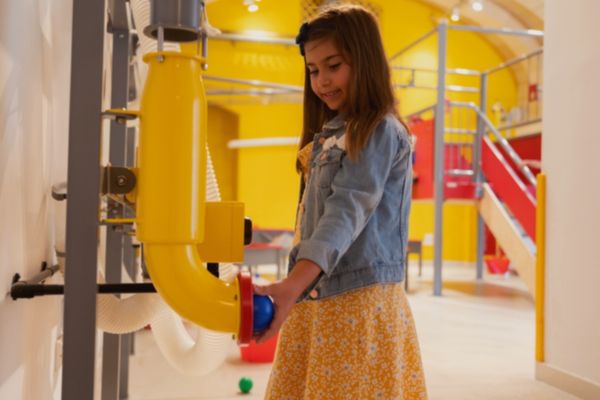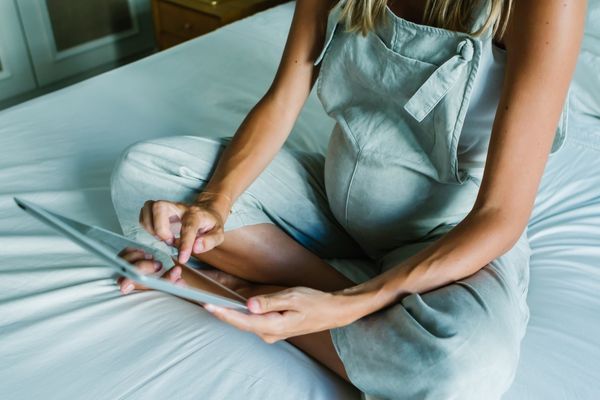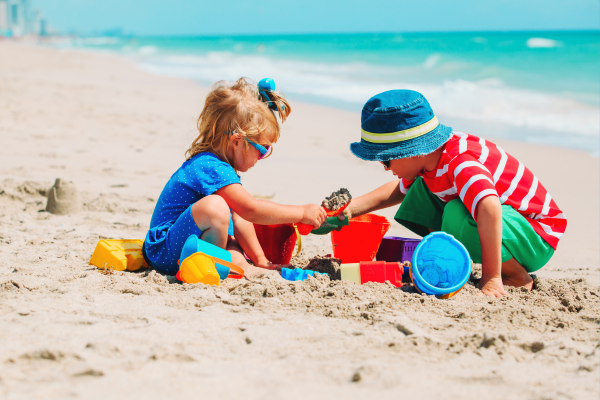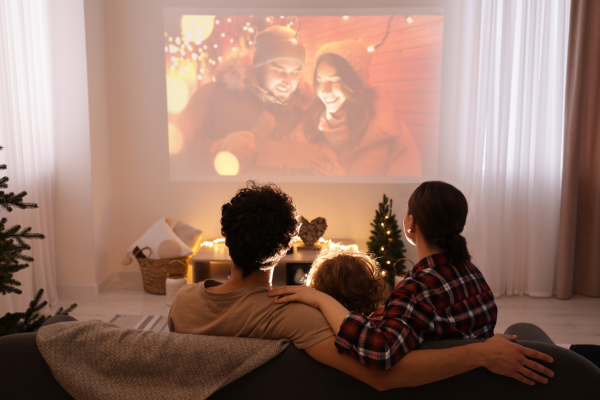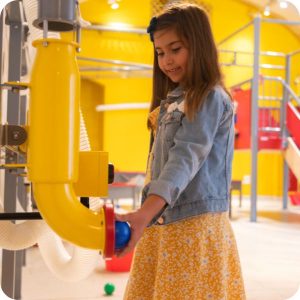 More often than not, science may recall images of white lab coats, microscopes, test tubes and complex mathematical formulas. In other words, nothing which is imminently relevant to toddlers and young children. However, these images do not represent a full picture of what science is all about. That is only one of the many facets. Science is both a body of knowledge and processes of gathering information. It is not only about learning facts, but it is also a way of thinking. Encouraging this approach in our kids, will allow them to explore more their surroundings. Without knowing, you would be raising little scientists.
More often than not, science may recall images of white lab coats, microscopes, test tubes and complex mathematical formulas. In other words, nothing which is imminently relevant to toddlers and young children. However, these images do not represent a full picture of what science is all about. That is only one of the many facets. Science is both a body of knowledge and processes of gathering information. It is not only about learning facts, but it is also a way of thinking. Encouraging this approach in our kids, will allow them to explore more their surroundings. Without knowing, you would be raising little scientists.
The Beauty of Science
Scientific thinking gives us a basis to be able to seek knowledge and understand phenomena efficiently and effectively. It involves asking intentional questions, making observations, and coming up with appropriate answers based on the same evidence which was collected. Children are naturally able to do this due to their innate sense of curiosity and their desire to make sense of the world. For them, many things which adults take for granted are still a novelty. Kids seek to learn and explore new things. They are trying hard to connect the dots and figure out how things work.
The only way for them to satisfy their curiosity and gain access to that information is by asking questions, and plenty of them! We all know that they are experts at that! If parents and caregivers can give children the space to lean into that natural desire to learn, they can set them up for success. They can teach them priceless skills, such as critical thinking and problem solving, from a very young age. These skills will inevitably be useful for their future, no matter which career they choose to pursue.
Science & Kids
Children’s brains are naturally designed to learn and absorb information, therefore if they are provided with enriching experiences, anything can be a learning opportunity. Something as simple as a bathtub can transform into an investigation space as they predict which of their toys will float or sink. A trip to a beach or garden can be a good time to allow children to explore and investigate, allowing them to expand their vocabulary as they learn to describe the objects they are seeing or what they are experiencing.
Value their questions and take time to answer them as best as you can, even if you don’t have all the answers. You can also use this as a teaching moment to find the answer together later. The nature of science shows children, that it is acceptable to not know everything or fail at a task. After all, many investigations in science aren’t an overnight success! It takes years of trial and error, making mistakes and learning from them to improve their next efforts.
Esplora Interactive Science Centre
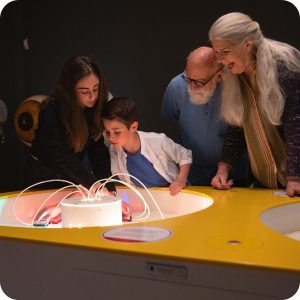 Hands-on, unstructured learning is highly recommended to allow children to use and practice their curiosity and imagination while also engaging their senses. In this regard, Esplora Interactive Science Centre is an informal educational and recreational facility which is suited to visitors of all age groups. Featuring over 200+ interactive exhibits, a Planetarium theatre, hands-on workshops and engaging science shows, it is the perfect place to introduce a young child to the world of science in a fun, exciting and enjoyable way through an inquisitive approach.
Hands-on, unstructured learning is highly recommended to allow children to use and practice their curiosity and imagination while also engaging their senses. In this regard, Esplora Interactive Science Centre is an informal educational and recreational facility which is suited to visitors of all age groups. Featuring over 200+ interactive exhibits, a Planetarium theatre, hands-on workshops and engaging science shows, it is the perfect place to introduce a young child to the world of science in a fun, exciting and enjoyable way through an inquisitive approach.
Esplora aims to foster curiosity, interest and understanding of science among people of all ages. The science centre features a delightful area, Little Esploras, which is ideal for children between the ages of 3 and 5 years. It includes an outdoor Playscape area with fun exhibits, water exhibits as well as a Pirate Ship. Visitors are encouraged to explore, think and imagine as they immerse themselves in a positive and exciting interactive experience.
Activities for kids
If, on the other hand, you’re opting for other activities or experiences, these should vary according to the children’s likes and dislikes. They should be chosen according to their age, stage of development and character. Science-related activities introduce young children to the world of science, fostering a lifelong love of the subject. Normally, when people say that they aren’t interested in science or even dislike it, it is often linked to a negative experience they had early on in life which they associate with the subject.
It’s very difficult to unlearn, erase or change that outlook, however we can do our best to prevent the event from happening in the first place by linking science to positive and everyday childhood learning experiences. This will help instil a love for the sciences and will also be laying the foundations for the next generation of scientists especially if your child already shows a natural inclination towards it from a young age.
Simple experiments for our little scientists
Here are a few simple fun activities you can do at home to start raising little scientists:
Oobleck
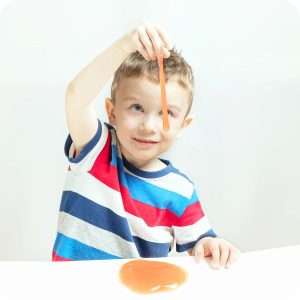 Oobleck is a strange slimy substance which seems like a liquid but can also behave like a solid when pressure is applied to it. Invite the child to touch and play with the oobleck and you will start engaging them in sensory play as they investigate the substance. You can also ask them some questions about it.
Oobleck is a strange slimy substance which seems like a liquid but can also behave like a solid when pressure is applied to it. Invite the child to touch and play with the oobleck and you will start engaging them in sensory play as they investigate the substance. You can also ask them some questions about it.
Note: This activity can get messy! Make sure you prepare this in an area which is easy to clean and encourage the child to be hands-on whilst creating the oobleck.
What you’ll need:
- A large mixing bowl;
- 2 Cups of Corn-starch or Cornflour;
- 1 Cup Water;
- Food Colouring.
Method:
- Add the corn-starch to a large mixing bowl.
- If you’d like your oobleck to be coloured, add food colouring to the water.
- Pour the water and corn-starch into a bowl and mix well.
- If the oobleck feels firm when you poke it but still behaves like a liquid, it’s ready to play with. If not, add more water or corn-starch accordingly.
Questions and Investigation:
- Invite the child to feel the texture of the corn-starch and water separately before you mix them together. Ask what they think will happen when they’re mixed. Will it become a solid or a liquid?
Once the oobleck is done, let them play freely to experience the different textures. How does it feel when you punch it? How does it feel when you pick it up softly? Is it a solid or a liquid?
Walking Water
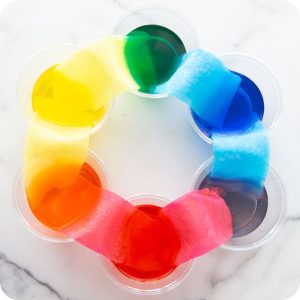 This is another simple activity and could also be a good way to introduce primary colours to children as well as show them how these can be mixed together to create more colours. With some patience, the child can watch as water travels from one cup to another in the same way that trees get water to ascend from the ground to their roots.
This is another simple activity and could also be a good way to introduce primary colours to children as well as show them how these can be mixed together to create more colours. With some patience, the child can watch as water travels from one cup to another in the same way that trees get water to ascend from the ground to their roots.
What you’ll need:
- 6 clear cups (glass or plastic);
- Water;
- Paper Towels;
- Food colouring (Red, Yellow and Blue).
Method:
- Fill 3 of the cups with water to the brim.
- Add food colouring to each one of them. You will have 1 blue cup, 1 red cup and 1 yellow cup.
- Arrange all 6 cups in a circle, having an empty cup alternating between each filled cup.
- Cut 6 pieces of paper towel and fold them to create a narrow rectangle.
- Fold the rectangle in half and place one half in a full cup and the other half in the adjacent empty cup.
- Repeat until there is a paper towel connecting each cup to the next one in the circle.
- Water should start seeping from the coloured cup into the empty cup next to it.
- After 1 hour, you should start seeing some coloured water at the bottom of the empty cups.
- Notice how the two colours have mixed to create a secondary colour.
The Esplora website features a blog section with plenty of science activities that can be done at home using basic objects that can easily find around the house.
We hope you loved reading this.
